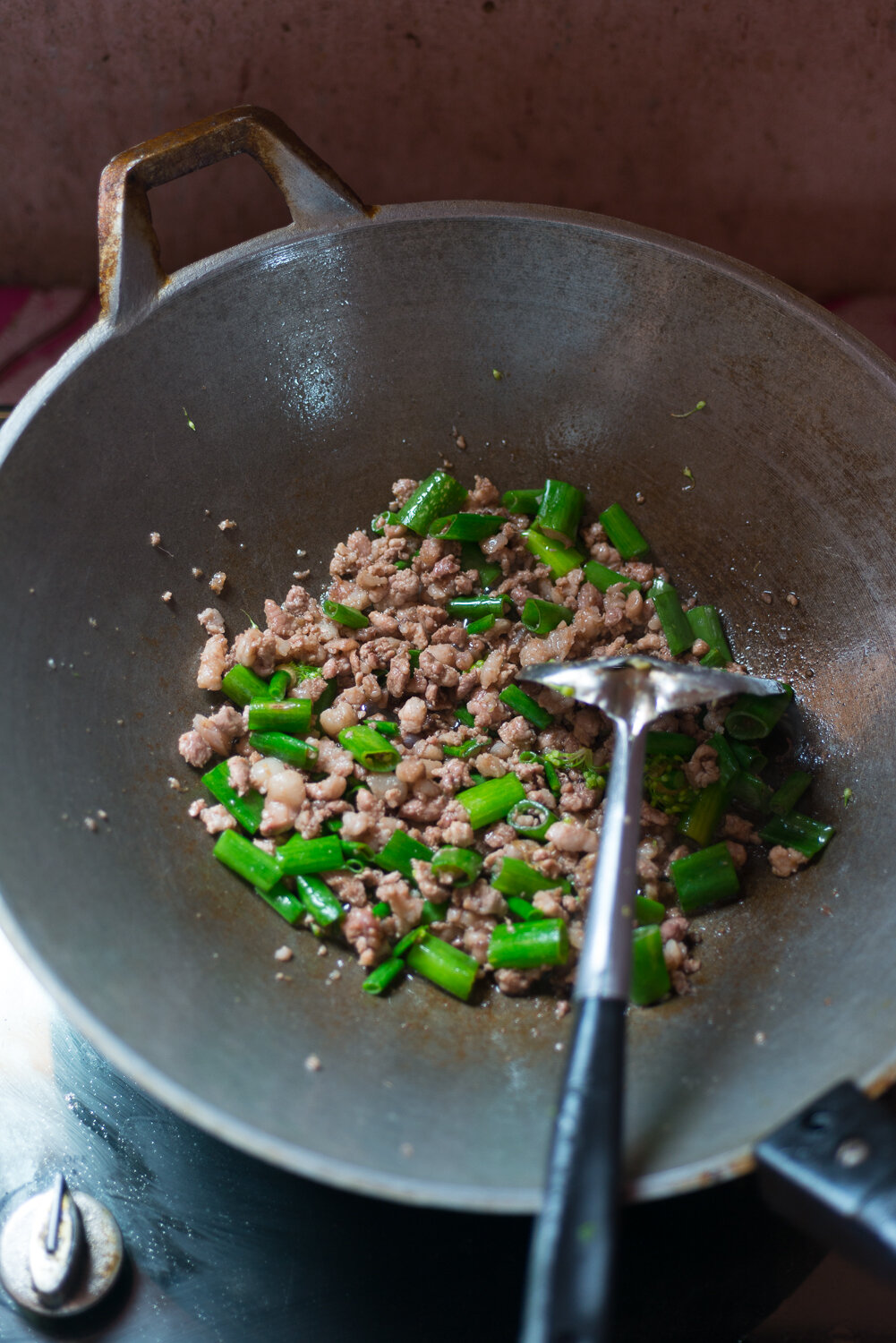Thailand’s Hmong population can be traced back to China, a legacy that, as many as 200 years later, can still be seen in certain dishes. One example is this stir-fry, which combines what for many Hmong might be considered decadent ingredients – meat and oyster sauce – and the type of resourceful produce their cuisine revolves around – in this case the slightly sweet, pleasantly pungent flowering stalks of the onion plant. If you can source onion stalks, it’s a simple and delicious dish that probably wouldn’t be out of place in rural China.
Nqaij Puas Xyaw Paj Dos
Ground pork belly stir-fried with the stalks of flowering onion
Serves 4
Ingredients
150 grams pork belly
1 tablespoon vegetable oil
400 grams flowering onion stalks
2 tablespoons oyster sauce
½ teaspoon salt
Thai Kitchen Tools
medium (approximately 12-inch) wok
Procedure
Using a heavy cleaver, chop the pork belly to a coarse consistency.
Trim off and discard the thick, tough ends of the flowering onion stalks, and cut the stalks into sections approximately 2 inches long (you should end up with approximately 300 grams of flowering onion stalks).
To a wok over medium-high heat, add the oil and pork. Fry, stirring occasionally, until the pork is cooked through, about 2 minutes. Increase heat to high, add the flowering onion stalks, oyster sauce and salt, stirring occasionally, until the vegetables are just cooked but still crispy, about 3 more minutes. Taste, adjusting seasoning if necessary; the nqaij puas xyaw paj dos should taste salty, from the oyster sauce and salt, and fragrant, from the onion stalks.
Remove to a serving dish and serve hot, with long-grained rice, as part of a Hmong meal.














